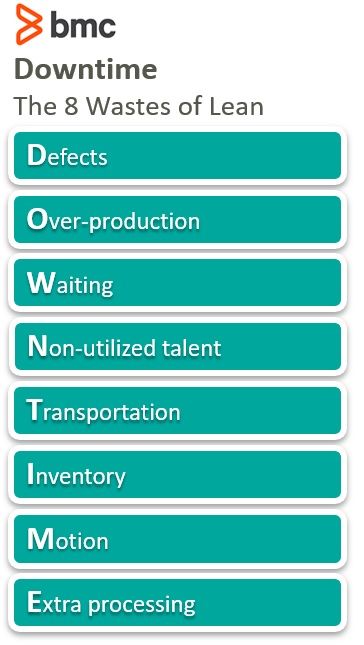Lean Startup Concepts & How To Become A Lean Startup


The Lean Startup concept has it roots to Toyota’s transformative Lean Manufacturing method for waste minimization and productivity increase.
Lean Startup elevates these goals to incorporate continuous improvement, identifying the big picture associated with each progress phase and using the continuous feedback loop to better engage end-users and relevant stakeholders.
Let's take a look.
Lean Startup is a methodology designed to validate a business hypothesis through short and rapid release cycles of product features, business models, and strategies.
The concept is designed to reduce market risk by validating learning through the release of a Minimum Viable Product (MVP). That is, designing a low-barrier to entry first version of a product, so that it can start driving value sooner, and then iterating on it consistently to add more improvements and functionality.
Lean Startup embraces getting rid of waste:
 (Learn about Lean Six Sigma, another Lean offshoot.)
(Learn about Lean Six Sigma, another Lean offshoot.)
For startup firms and small organizations, the concept of Lean Startup is easy to adopt considering their agility to transition into new market segments and strategies without incurring significant cost and risk.
For large enterprises however, every product release is received by a larger market and has to be scaled across the customer-base to identify the true value to end-users and business. This means that the initial cost and risks associated with transitioning to new business models, product features, and strategies can outweigh the proposed benefits of making the changes.
However, failing to adapt to market changes and evolving customer expectations also risk competitive strength against fast moving startups.
Consider the case example of Uber. The startup originally tested an MVP offering a crowd-sourced ride-sharing platform. The idea was welcomed and validated by the first set of users and the company was able to quickly expand to more cities, countries, and eventually disrupted the global transportation industry. The idea of crowd-sourced service sharing platform was not entirely new, but car manufacturers and transportation service providers failed to replicate similar business models, services, and the agility to disrupt the industry.
The concepts of Lean Startup can apply to organizations of all sizes and industries. If you're following these best concepts and principles, you're well on your way to being a Lean Startup.

Large enterprises tend to employ creative, ambitious, and competent individuals in abundance. These are the same traits commonly found in entrepreneurs.
Large enterprises therefore have the necessary enablers to operate as a Lean Startup, although they may face a different set of challenges preventing execution of the Lean Startup methodology.
Here are some ways to encourage entrepreneurs:
The goal of entrepreneurship management within a corporate environment is not to treat the startup team as a product but to institutionalize the entrepreneurial venture.
The startup team itself shouldn’t just focus on experimenting and producing innovative new products, but to produce means of continuous innovation. The resulting changes should ultimately transform the large organization into a sustainable enterprise by means of innovation changes including, but not limited to, new business models and products.
Considering the higher risk of changes to an otherwise stable enterprise, disciplined management will be required. There is no standardized approach to manage entrepreneurship within a corporate environment, but a traditional way of management may not work effectively. Both cultural and hierarchical changes may be necessary to address the management requirements of a startup organization.
Large organizations invest significant resources in research and development, with many initiatives geared toward technology improvement. For new inventions to translate into valuable innovation products that would address real market needs and disrupt the market...
A viable strategy is to develop semi-autonomous teams that can identify the real market need and develop a solution before pursuing the mass market. This is where the concept of MVP comes into play. Organizations can always validate their assumptions by introducing an MVP into the market.
Traditional incentives and accountability processes don’t hold well with the innovation needs of a Lean startup. A typical large enterprise pays performance bonus and perks when employees roll out a new product that does well in the industry.
Career equity, however, is seen with less importance in comparison. Employees are encouraged to develop products designed to work well based on known information of the market and customer requirements. From another perspective, employees are not necessarily encouraged for experiments that have a higher degree of failure irrespective of the knowledge gained during the experimentation process.
Instead, large organizations should reward experimentation and lessons learned through failures. Progressive enterprises such as Facebook embrace the culture of failing fast and early (at least they used to). As a result, Facebook is able to both:
(Explore our Guide to Enterprise Innovation.)
Lean Startup organizations are designed to eliminate friction especially when it comes to"
Large companies may need to overhaul their governance procedures and controls to facilitate work planning, budget distribution, and team development, among other aspects of introducing a new MVP to the market.
To build, measure, and learn:
Finally, teams working on startup-like entrepreneurial initiatives in corporate environments should lean away from all efficiencies and improvements that are ultimately destined to end-up as waste. Instead, learn what’s truly required to solve end-user pain points at scale, and focus all efforts into developing tangible solutions to those problems.